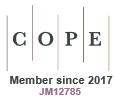Assessing the value of online palliative care information
Seth Nicholls A * and Jennifer Tieman AA
Abstract
This study aimed to assess the value of an online palliative care resource (CareSearch) in providing evidence-based information to clinicians and consumers; and online palliative care information more broadly from the perspective of key stakeholder organisations.
Nine semi-structured interviews with representatives from key stakeholder organisations were undertaken. A pragmatic, qualitative analytical approach was used to identify key findings.
Seven key findings were identified. These emphasised the criticality of CareSearch, the importance of access to high-quality online palliative care information, the need for a robust palliative care evidence base, challenges to the delivery of palliative care, the need to improve visibility, the need to improve accessibility, and the importance of co-design and lived experience.
CareSearch and online palliative care information have a critical role to play in responding to the challenges facing the sector. Maximising the value of such information will require improvements in access to evidence, visibility, usability, and the development of resources tailored to diverse users.
Keywords: CareSearch, clinical and consumer decision-making, end of life, evidence-based information, online health information, palliative care.
References
1 Bujnowska-Fedak MM, Węgierek P. The Impact of Online Health Information on Patient Health Behaviours and Making Decisions Concerning Health. Int J Environ Res Public Health 2020; 17(3): 880.
| Crossref | Google Scholar | PubMed |
2 Oktay LA, Abuelgasim E, Abdelwahed A, Houbby N, Lampridou S, Normahani P, et al. Factors Affecting Engagement in Web-Based Health Care Patient Information: Narrative Review of the Literature. J Med Internet Res 2020; 23: e19896.
| Crossref | Google Scholar |
4 Tieman JJ, Bradley SL. Systematic review of the types of methods and approaches used to assess the effectiveness of healthcare information websites. Aust J Prim Health 2013; 19(4): 319-24.
| Crossref | Google Scholar | PubMed |
5 Tsirintani M. Web Quality Assurance of Information in Healthcare. Stud Health Technol Inform 2022; 295: 442-5.
| Crossref | Google Scholar | PubMed |
6 Brown A, Barnes C, Byaruhanga J, McLaughlin M, Hodder RK, Booth D, et al. Effectiveness of Technology-Enabled Knowledge Translation Strategies in Improving the Use of Research in Public Health: Systematic Review. J Med Internet Res 2020; 22(7): e17274.
| Crossref | Google Scholar | PubMed |
7 Tieman J, Nicholls S. Enhancing the efficacy of healthcare information websites: a case for the development of a best practice framework. BMJ Open 2024; 14(9): e088789.
| Crossref | Google Scholar | PubMed |
8 Sallnow L, Smith R, Ahmedzai SH, Bhadelia A, Chamberlain C, Cong Y, et al. Report of the Lancet Commission on the Value of Death: bringing death back into life. Lancet 2022; 399(10327): 837-84.
| Crossref | Google Scholar | PubMed |
9 Department of Health and Aged Care. Our work related to palliative care. 2023. Available at https://www.health.gov.au/topics/palliative-care/related-work
10 Abernethy A, Adams L, Barrett M, Bechtel C, Brennan P, Butte A, et al. The Promise of Digital Health: Then, Now, and the Future. NAM Perspectives. Discussion Paper, National Academy of Medicine, Washington, DC. doi.org/10.31478/202206e. 2022;
| Crossref | Google Scholar | PubMed |
11 BetterEvaluation. What is evaluation? 2025. Available at https://www.betterevaluation.org/getting-started/what-evaluation


